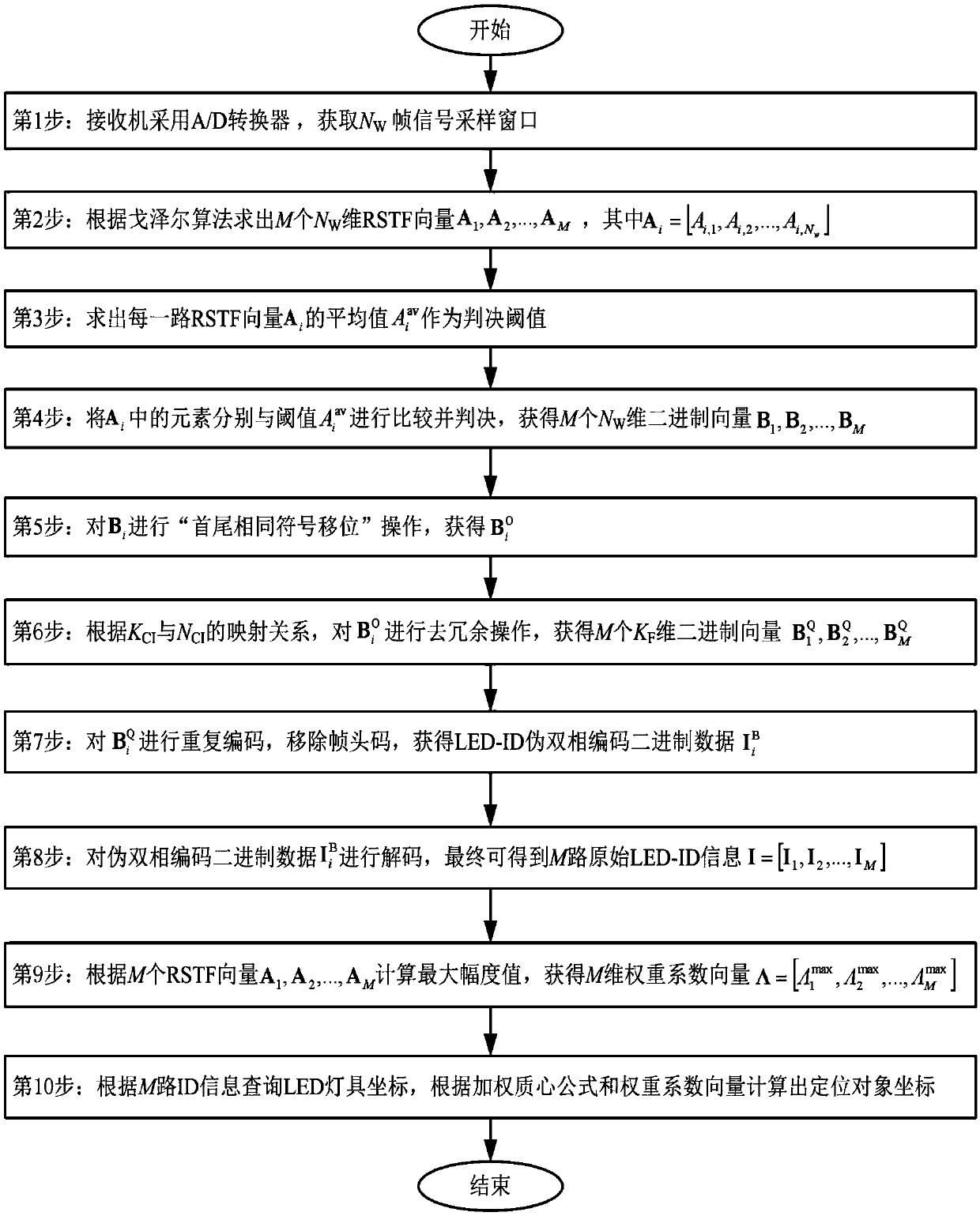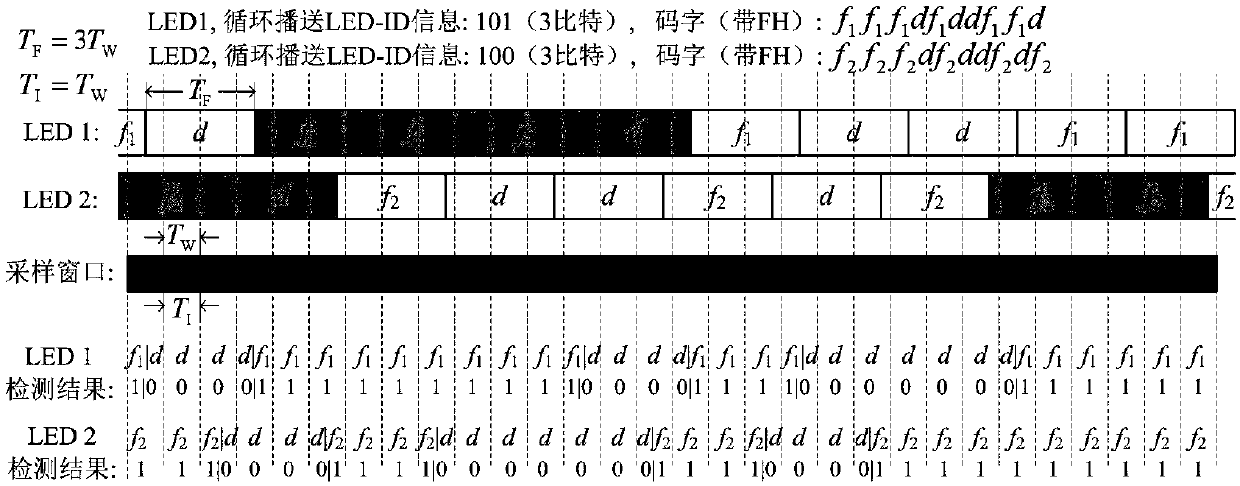Asynchronous visible light positioning method
A positioning method and visible light technology, applied in positioning, transmission system, free space transmission, etc., can solve the problems of high complexity of positioning algorithm and excessive frequency resource occupation
- Summary
- Abstract
- Description
- Claims
- Application Information
AI Technical Summary
Problems solved by technology
Method used
Image
Examples
Embodiment 1
[0069] Such as figure 1 As shown, an asynchronous visible light positioning method includes the following steps:
[0070] Step S1: Establish a BCAM mechanism, and use the BCAM mechanism to encode and modulate the LED-ID information. Since M adjacent LED lamps use M different non-zero carrier frequencies f i (i=1,2,...,M) FSOOK symbols and M' frequency f i The auxiliary symbols of '(i'=1,2,..,M') modulate the LED-ID signal, where f i '≠f i and 1≤M'≤M, multiple adjacent LED lamps can share a frequency for modulating auxiliary symbols, or use different auxiliary symbol frequencies. The specific steps are:
[0071] Step 1: Encode the binary LED-ID information using the coding idea of bi-phase code. The original bit information "0" is represented by "01", and "1" is represented by "10", that is, each unit bit is represented by double bits ;
[0072] Step 2: Add FH code to the encoded binary LED-ID information. This FH code is composed of more than or equal to 3 consecutive b...
Embodiment 2
[0115] figure 2 An embodiment of a BCAM mechanism is provided. Assuming that a 4-digit LED-ID information code "0110" is transmitted, after encoding by the pseudo-biphase code, the information code becomes "01101001", and then the FH code "1110" is added to the encoded binary LED-ID information. The number of consecutive "0" and "1" in the ID information after pseudo-biphase encoding will not exceed two, so FH "1110" is unique in the LED-ID information; finally, perform FSOOK alternate modulation on the binary sequence , the specific method is to use the information bit "1" with a duration of T F frequency is f C The FSOOK symbol is represented, while the information bit "0" is represented by a duration of T F The direct current (zero frequency) symbol representation.
[0116] image 3 It shows how the present invention performs multi-window detection. Under the BCAM mechanism, only 1 to 4 consecutive identical symbols will appear in the system. In order to ensure the u...
PUM
 Login to View More
Login to View More Abstract
Description
Claims
Application Information
 Login to View More
Login to View More - R&D Engineer
- R&D Manager
- IP Professional
- Industry Leading Data Capabilities
- Powerful AI technology
- Patent DNA Extraction
Browse by: Latest US Patents, China's latest patents, Technical Efficacy Thesaurus, Application Domain, Technology Topic, Popular Technical Reports.
© 2024 PatSnap. All rights reserved.Legal|Privacy policy|Modern Slavery Act Transparency Statement|Sitemap|About US| Contact US: help@patsnap.com










